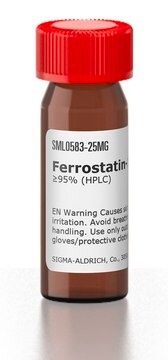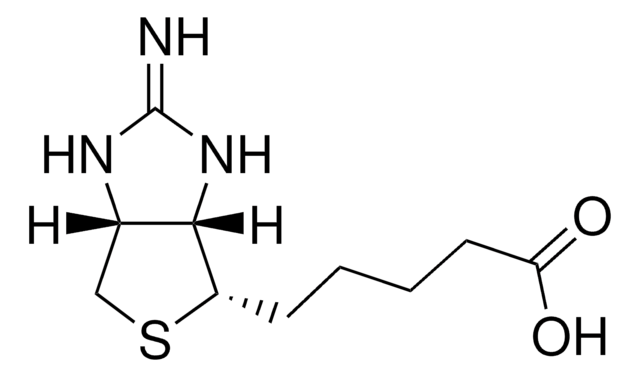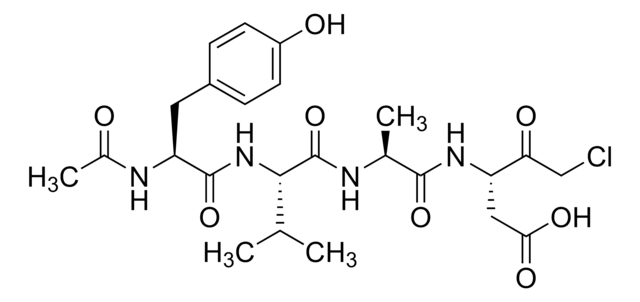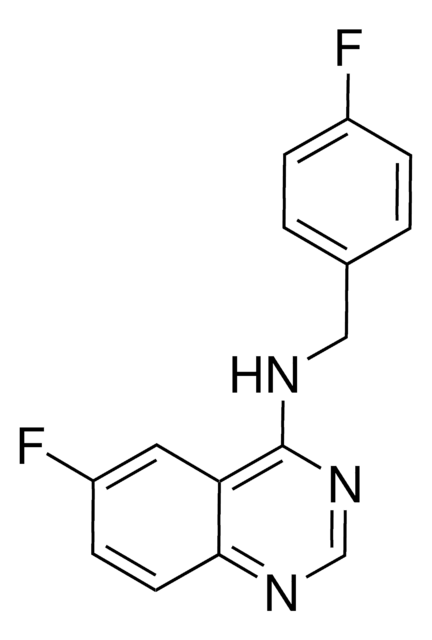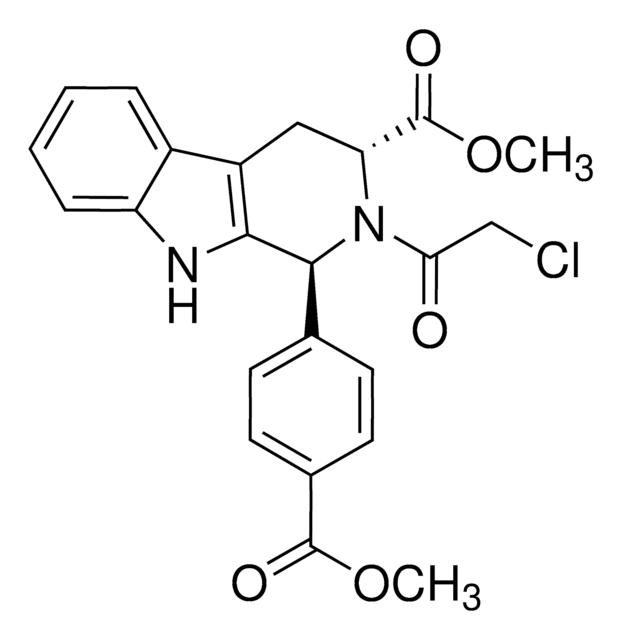SML0063
Q-VD-OPh hydrate
≥95% (HPLC), powder, pan-caspase inhibitor
Synonym(s):
5-(2,6-Difluorophenoxy)-3-[[3-methyl-1-oxo-2-[(2-quinolinylcarbonyl)amino]butyl]amino]-4-oxo-pentanoic acid hydrate
About This Item
Recommended Products
product name
Q-VD-OPh hydrate, ≥95% (HPLC)
Quality Level
Assay
≥95% (HPLC)
form
powder
storage condition
desiccated
color
white to light brown
solubility
DMSO: ≥14 mg/mL
shipped in
wet ice
storage temp.
−20°C
SMILES string
O=C(NC(C(C)C)C(NC(C(COC1=C(F)C=CC=C1F)=O)CC(O)=O)=O)C2=NC3=CC=CC=C3C=C2.[H]O[H]
InChI
1S/C26H25F2N3O6.H2O/c1-14(2)23(31-25(35)19-11-10-15-6-3-4-9-18(15)29-19)26(36)30-20(12-22(33)34)21(32)13-37-24-16(27)7-5-8-17(24)28;/h3-11,14,20,23H,12-13H2,1-2H3,(H,30,36)(H,31,35)(H,33,34);1H2/t20-,23-;/m0./s1
InChI key
ONOTWLLTFZMERH-WCRWPNQISA-N
Application
- as a pan-caspase inhibitor to prevent cell death in urothelial carcinoma cells (UCC)
- to induce canonical caspase-dependent apoptosis in UC cells
- to block caspase-3 and Poly (ADP-ribose) polymerase-1 (PARP-1)
- to study the protective role of EspZ effector protein against apoptosis and necrosis in human epithelial cells
Biochem/physiol Actions
Features and Benefits
Storage Class Code
11 - Combustible Solids
WGK
WGK 3
Flash Point(F)
Not applicable
Flash Point(C)
Not applicable
Certificates of Analysis (COA)
Search for Certificates of Analysis (COA) by entering the products Lot/Batch Number. Lot and Batch Numbers can be found on a product’s label following the words ‘Lot’ or ‘Batch’.
Already Own This Product?
Find documentation for the products that you have recently purchased in the Document Library.
Customers Also Viewed
Articles
We offer many products related to caspases for your research needs.
Related Content
Apoptosis, or programmed cell death (PCD), is a selective process for the removal of unnecessary, infected or transformed cells in various biological systems. As it plays a role in the homeostasis of multicellular organisms, apoptosis is tightly regulated through two principal pathways by a number of regulatory and effector molecules.
n proliferating cells, the cell cycle consists of four phases. Gap 1 (G1) is the interval between mitosis and DNA replication that is characterized by cell growth. Replication of DNA occurs during the synthesis (S) phase, which is followed by a second gap phase (G2) during which growth and preparation for cell division occurs. Together, these three stages comprise the interphase phase of the cell cycle. Interphase is followed by the mitotic (M) phase.
Our team of scientists has experience in all areas of research including Life Science, Material Science, Chemical Synthesis, Chromatography, Analytical and many others.
Contact Technical Service





